

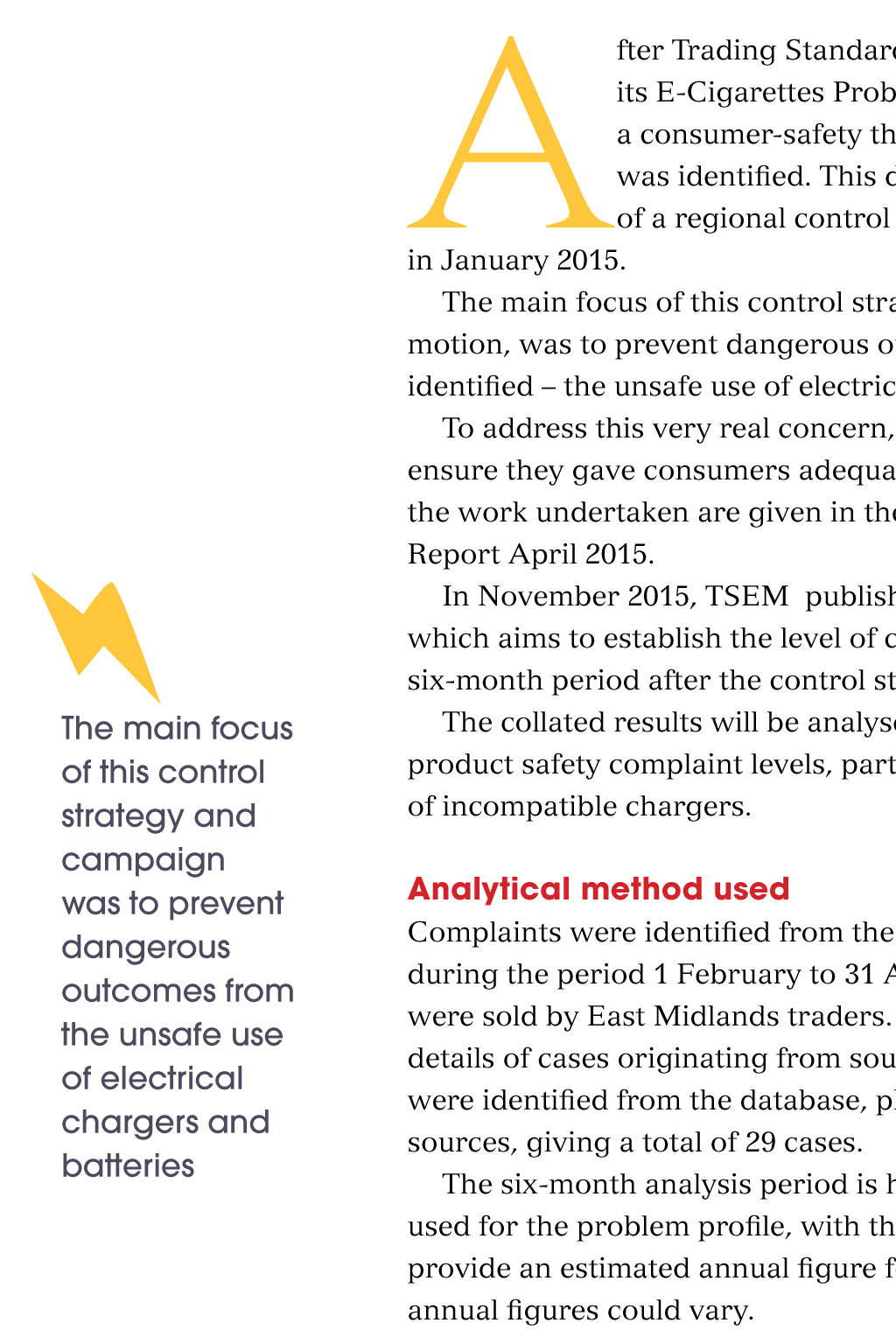
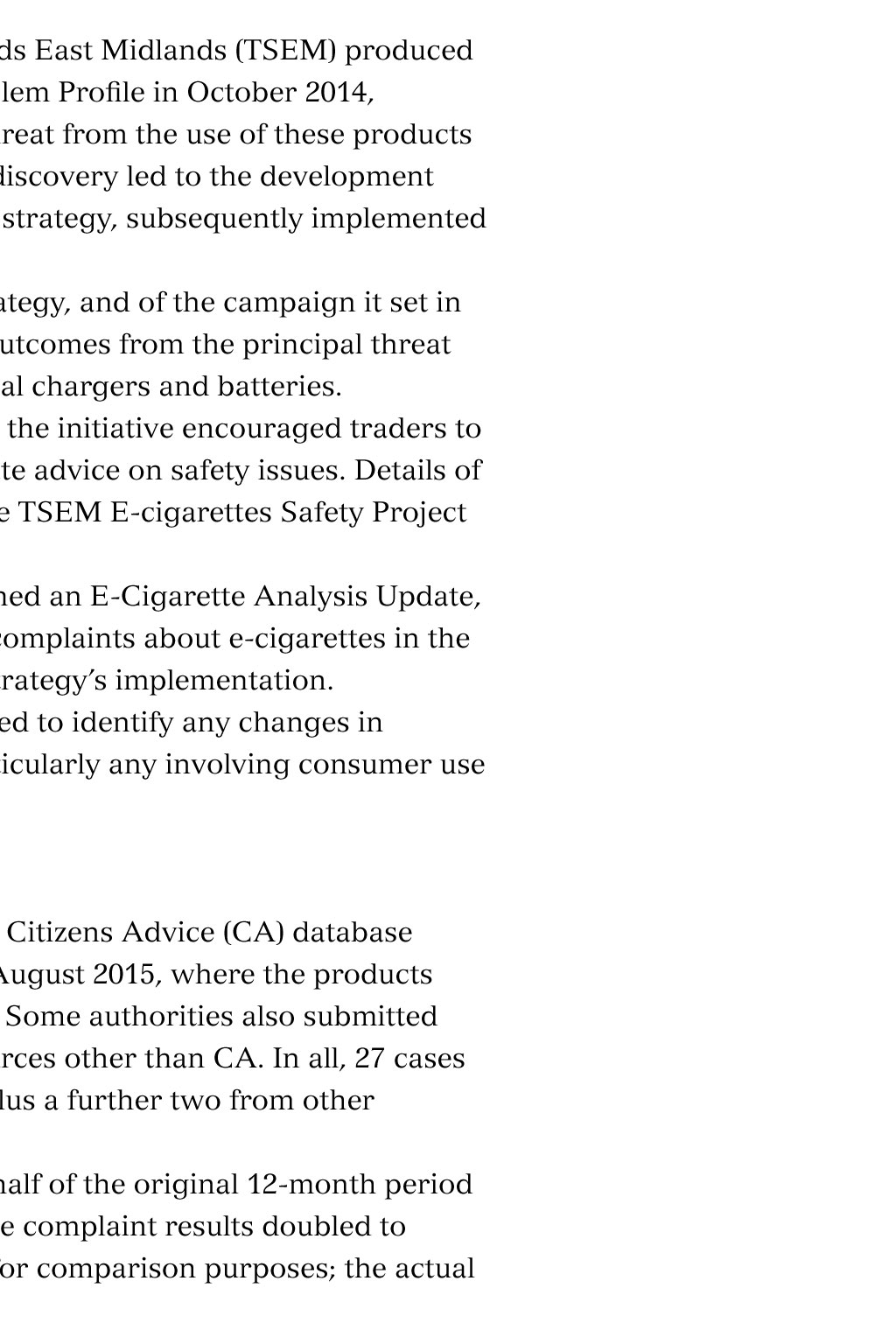
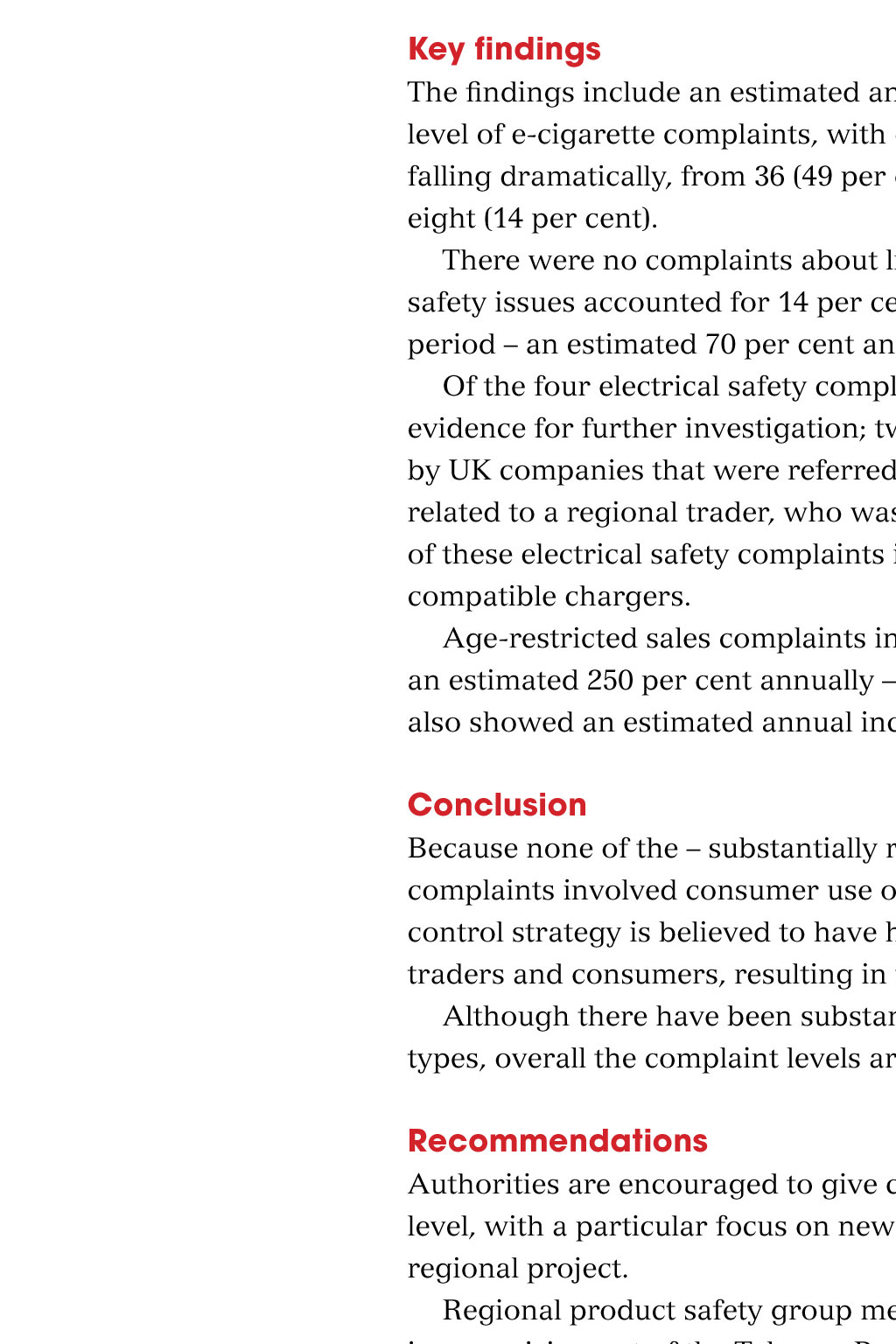
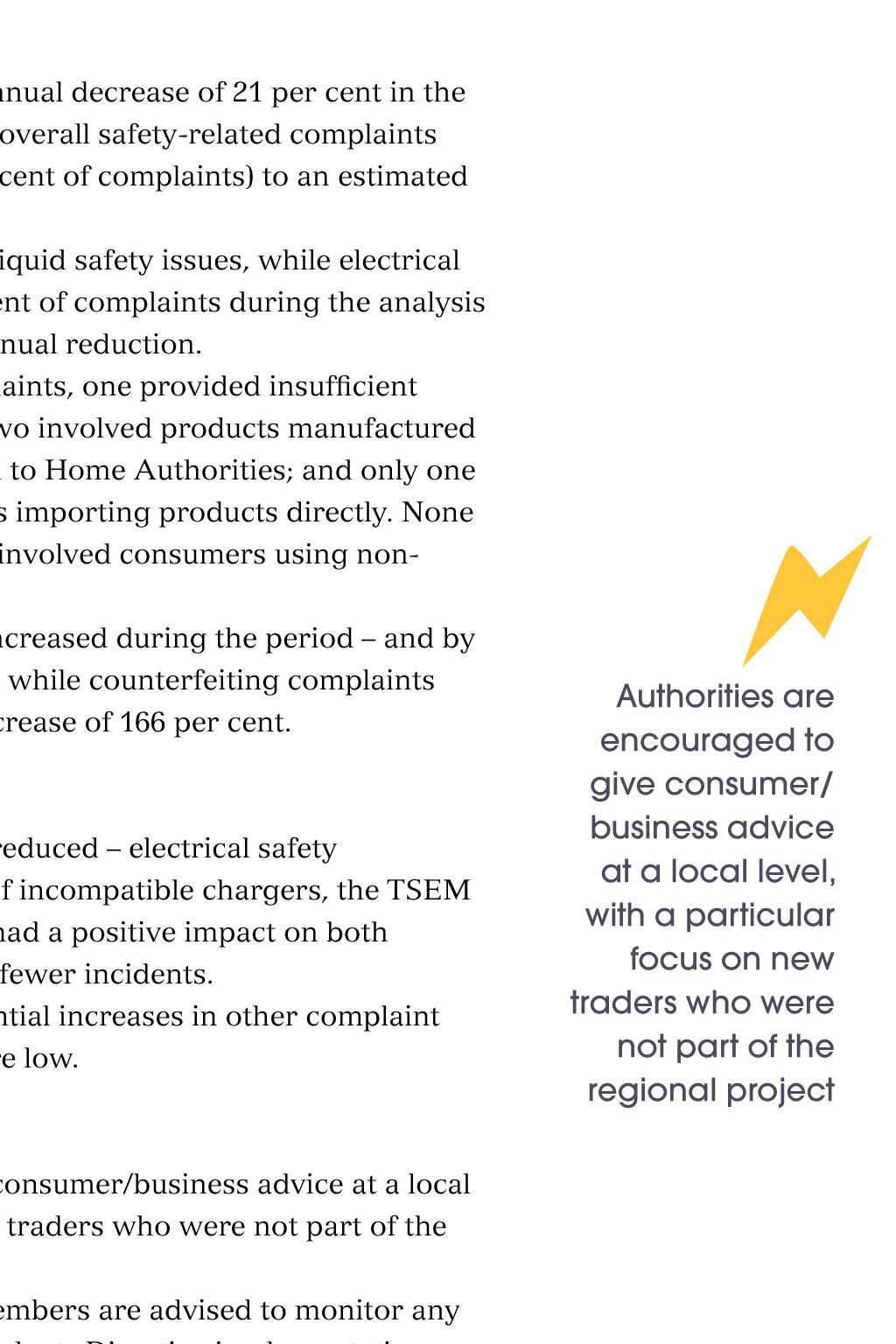
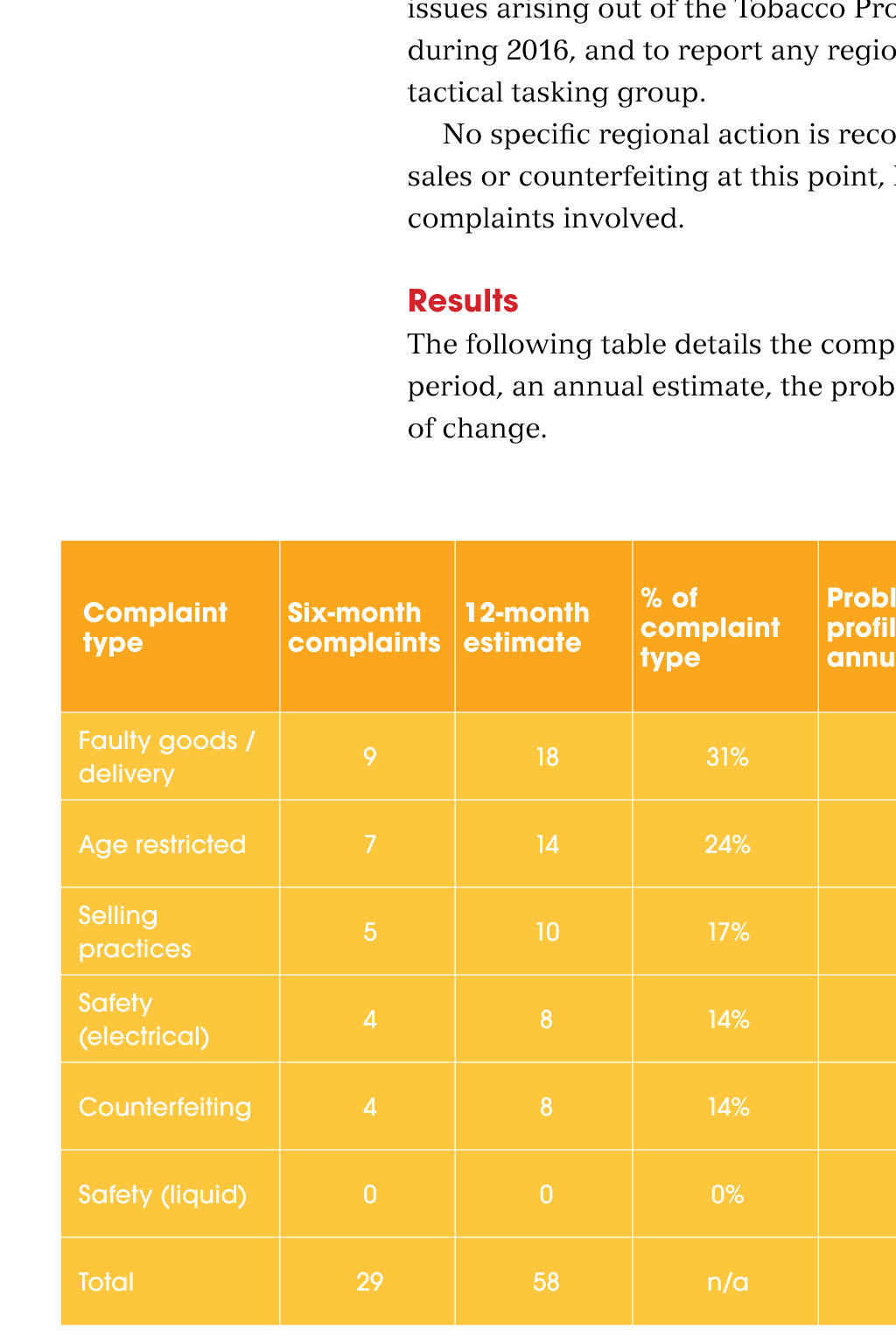
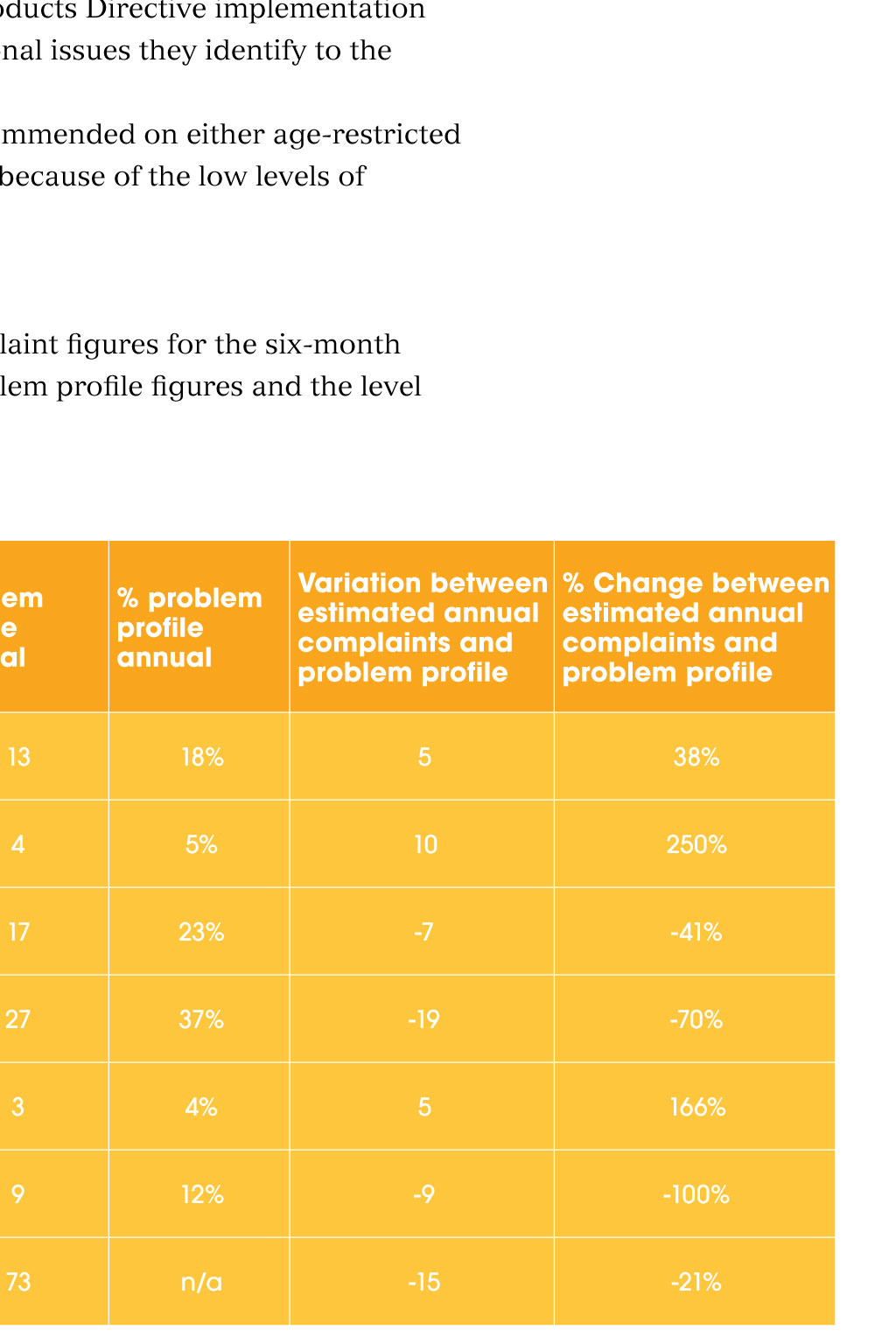













In this feature complaints strategy recommendations Vaping victory! Mark Burton reports on the success of Trading Standards East Midlands strategy to reduce unsafe use of electrical chargers and batteries A fter Trading Standards East Midlands (TSEM) produced its E-Cigarettes Problem Profile in October 2014, aconsumer-safety threat from the use of these products was identified. This discovery led to the development ofa regional control strategy, subsequently implemented in January 2015. The main focus of this control strategy, and of the campaign it set in motion, was to prevent dangerous outcomes from the principal threat identified the unsafe use of electrical chargers and batteries. To address this very real concern, the initiative encouraged traders to ensure they gave consumers adequate advice on safety issues. Details of the work undertaken are given in the TSEM E-cigarettes Safety Project Report April 2015. In November 2015, TSEM published an E-Cigarette Analysis Update, which aims to establish the level of complaints about e-cigarettes in the six-month period after the control strategys implementation. The collated results will be analysed to identify any changes in product safety complaint levels, particularly any involving consumer use of incompatible chargers. The main focus of this control strategy and campaign was to prevent dangerous outcomes from the unsafe use of electrical chargers and batteries Analytical method used Complaints were identified from the Citizens Advice (CA) database during the period 1 February to 31 August 2015, where the products were sold by East Midlands traders. Some authorities also submitted details of cases originating from sources other than CA. In all, 27cases were identified from the database, plus a further two from other sources, giving a total of 29 cases. The six-month analysis period is half of the original 12-month period used for the problem profile, with the complaint results doubled to provide an estimated annual figure for comparison purposes; the actual annual figures could vary. Key findings The findings include an estimated annual decrease of 21 per cent in the level of e-cigarette complaints, with overall safety-related complaints falling dramatically, from 36 (49 per cent of complaints) to an estimated eight (14 per cent). There were no complaints about liquid safety issues, while electrical safety issues accounted for 14 per cent of complaints during the analysis period an estimated 70 per cent annual reduction. Of the four electrical safety complaints, one provided insufficient evidence for further investigation; two involved products manufactured by UK companies that were referred to Home Authorities; and only one related to a regional trader, who was importing products directly. None of these electrical safety complaints involved consumers using noncompatible chargers. Age-restricted sales complaints increased during the period and by an estimated 250 per cent annually while counterfeiting complaints also showed an estimated annual increase of 166 per cent. Authorities are encouraged to give consumer/ business advice at a local level, with a particular focus on new traders who were not part of the regional project Conclusion Because none of the substantially reduced electrical safety complaints involved consumer use of incompatible chargers, the TSEM control strategy is believed to have had a positive impact on both traders and consumers, resulting in fewer incidents. Although there have been substantial increases in other complaint types, overall the complaint levels are low. Recommendations Authorities are encouraged to give consumer/business advice at a local level, with a particular focus on new traders who were not part of the regional project. Regional product safety group members are advised to monitor any issues arising out of the Tobacco Products Directive implementation during 2016, and to report any regional issues they identify to the tactical tasking group. No specific regional action is recommended on either age-restricted sales or counterfeiting at this point, because of the low levels of complaints involved. Results The following table details the complaint figures for the six-month period, an annual estimate, the problem profile figures and the level ofchange. Complaint type Six-month 12-month complaints estimate % of complaint type Problem profile annual % problem profile annual Variation between estimated annual complaints and problem profile % Change between estimated annual complaints and problem profile Faulty goods / delivery 9 18 31% 13 18% 5 38% Age restricted 7 14 24% 4 5% 10 250% Selling practices 5 10 17% 17 23% -7 -41% Safety (electrical) 4 8 14% 27 37% -19 -70% Counterfeiting 4 8 14% 3 4% 5 166% Safety (liquid) 0 0 0% 9 12% -9 -100% Total 29 58 n/a 73 n/a -15 -21% Credits Mark Burton is Trading Standards East Midlands regional intelligence analyst. Images: Icon Craft Studio / Shutterstock To share this page, in the toolbar click on You might also like The big bang January 2016